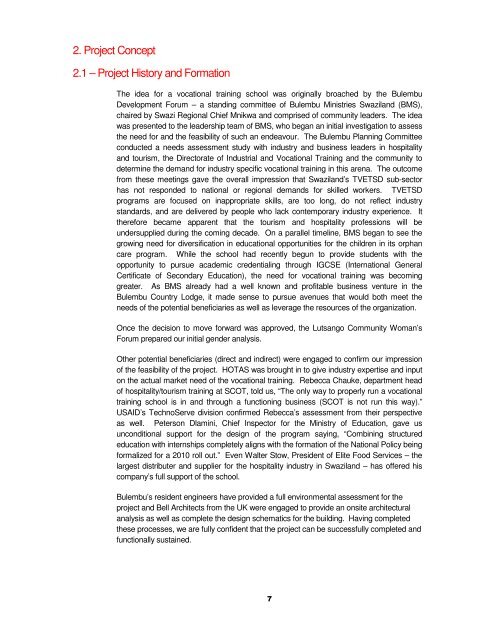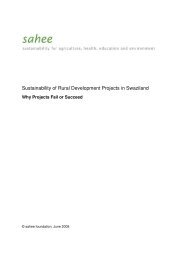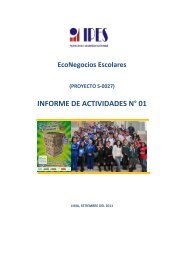Bulembu Vocational Training Centre - sahee foundation
Bulembu Vocational Training Centre - sahee foundation
Bulembu Vocational Training Centre - sahee foundation
Create successful ePaper yourself
Turn your PDF publications into a flip-book with our unique Google optimized e-Paper software.
2. Project Concept2.1 – Project History and FormationThe idea for a vocational training school was originally broached by the <strong>Bulembu</strong>Development Forum – a standing committee of <strong>Bulembu</strong> Ministries Swaziland (BMS),chaired by Swazi Regional Chief Mnikwa and comprised of community leaders. The ideawas presented to the leadership team of BMS, who began an initial investigation to assessthe need for and the feasibility of such an endeavour. The <strong>Bulembu</strong> Planning Committeeconducted a needs assessment study with industry and business leaders in hospitalityand tourism, the Directorate of Industrial and <strong>Vocational</strong> <strong>Training</strong> and the community todetermine the demand for industry specific vocational training in this arena. The outcomefrom these meetings gave the overall impression that Swaziland’s TVETSD sub-sectorhas not responded to national or regional demands for skilled workers. TVETSDprograms are focused on inappropriate skills, are too long, do not reflect industrystandards, and are delivered by people who lack contemporary industry experience. Ittherefore became apparent that the tourism and hospitality professions will beundersupplied during the coming decade. On a parallel timeline, BMS began to see thegrowing need for diversification in educational opportunities for the children in its orphancare program. While the school had recently begun to provide students with theopportunity to pursue academic credentialing through IGCSE (International GeneralCertificate of Secondary Education), the need for vocational training was becominggreater. As BMS already had a well known and profitable business venture in the<strong>Bulembu</strong> Country Lodge, it made sense to pursue avenues that would both meet theneeds of the potential beneficiaries as well as leverage the resources of the organization.Once the decision to move forward was approved, the Lutsango Community Woman’sForum prepared our initial gender analysis.Other potential beneficiaries (direct and indirect) were engaged to confirm our impressionof the feasibility of the project. HOTAS was brought in to give industry expertise and inputon the actual market need of the vocational training. Rebecca Chauke, department headof hospitality/tourism training at SCOT, told us, “The only way to properly run a vocationaltraining school is in and through a functioning business (SCOT is not run this way).”USAID’s TechnoServe division confirmed Rebecca’s assessment from their perspectiveas well. Peterson Dlamini, Chief Inspector for the Ministry of Education, gave usunconditional support for the design of the program saying, “Combining structurededucation with internships completely aligns with the formation of the National Policy beingformalized for a 2010 roll out.” Even Walter Stow, President of Elite Food Services – thelargest distributer and supplier for the hospitality industry in Swaziland – has offered hiscompany’s full support of the school.<strong>Bulembu</strong>’s resident engineers have provided a full environmental assessment for theproject and Bell Architects from the UK were engaged to provide an onsite architecturalanalysis as well as complete the design schematics for the building. Having completedthese processes, we are fully confident that the project can be successfully completed andfunctionally sustained.7





